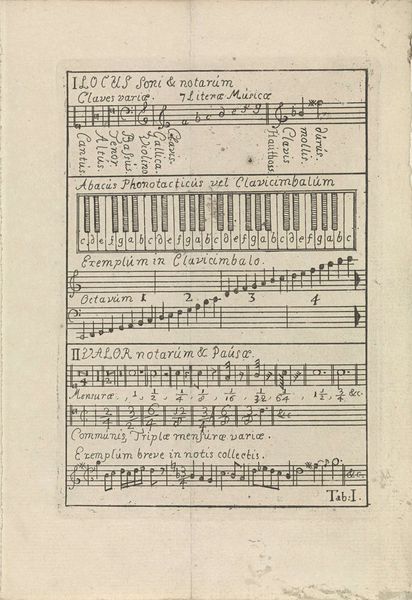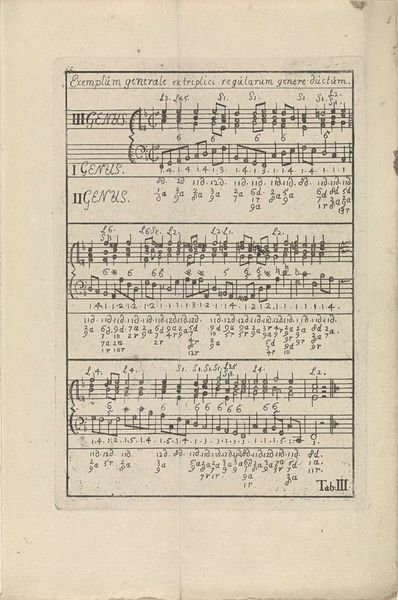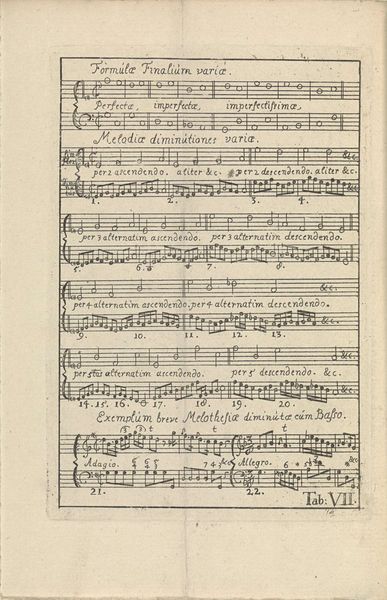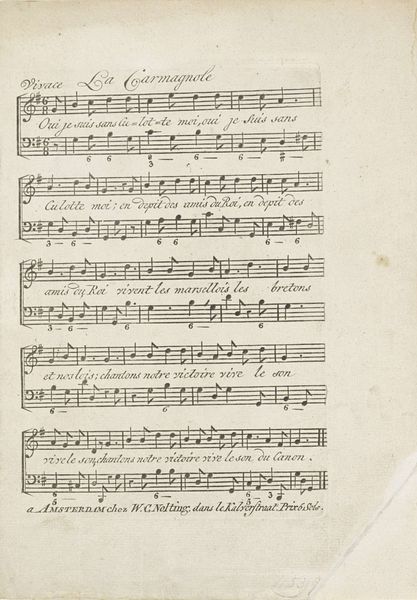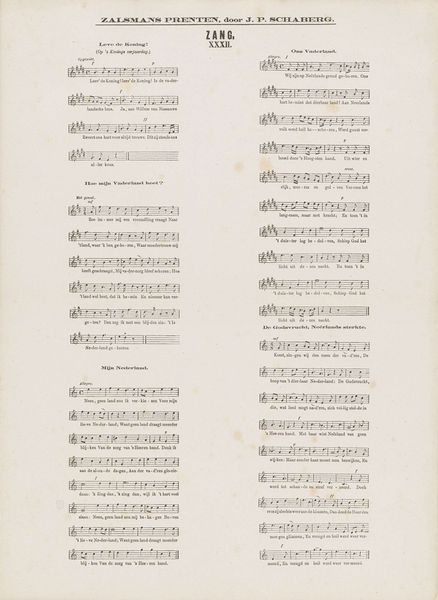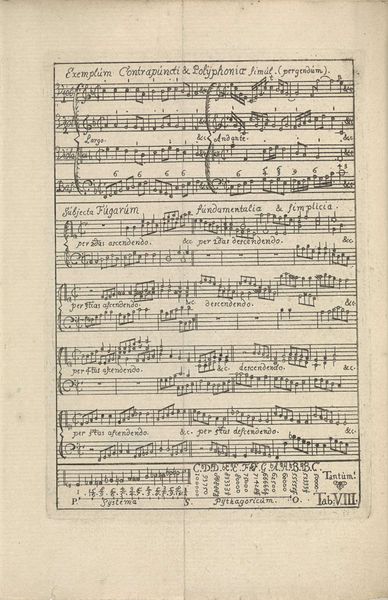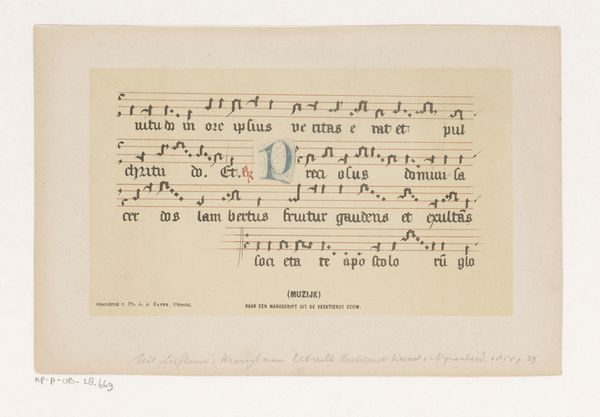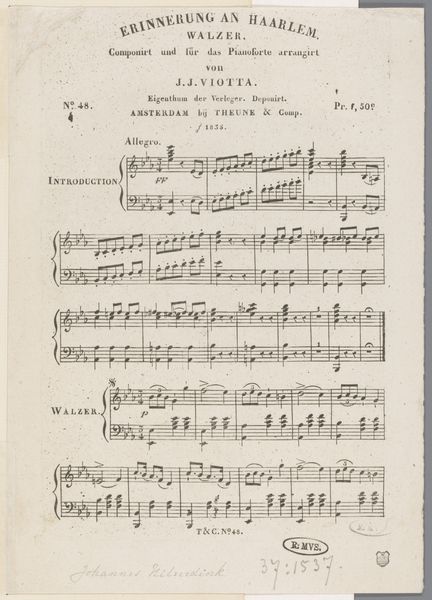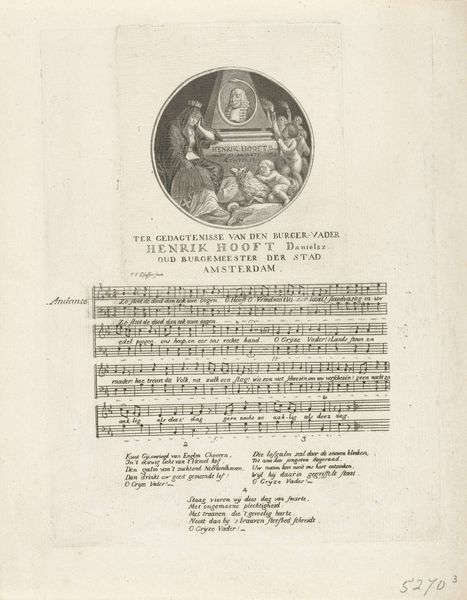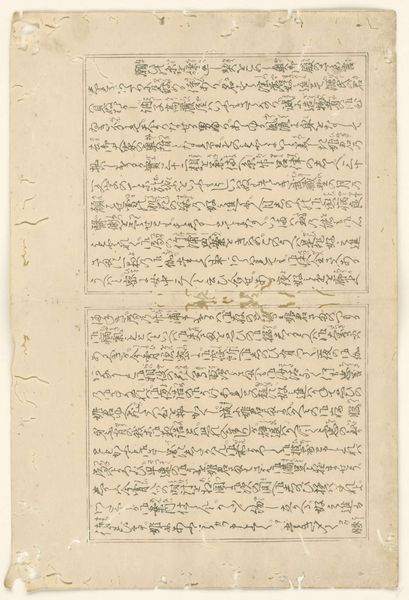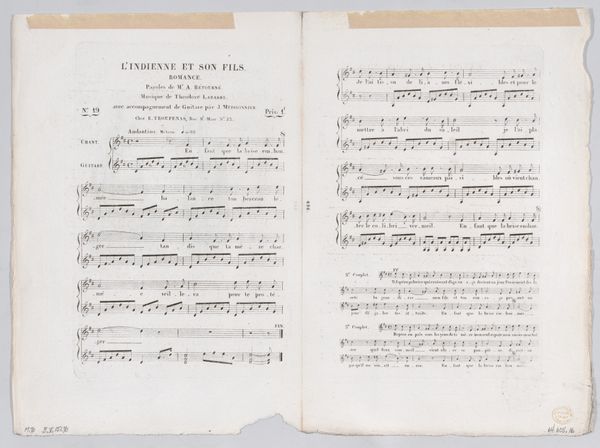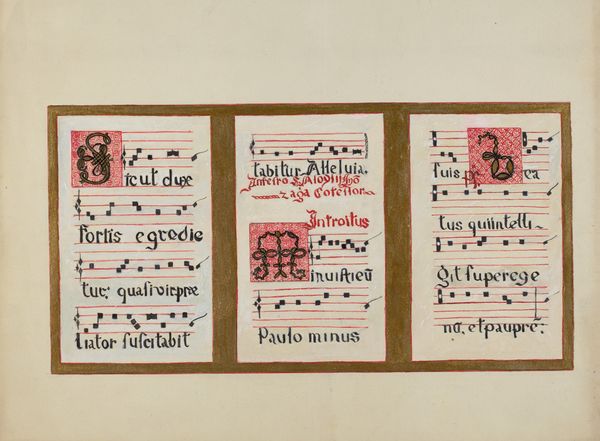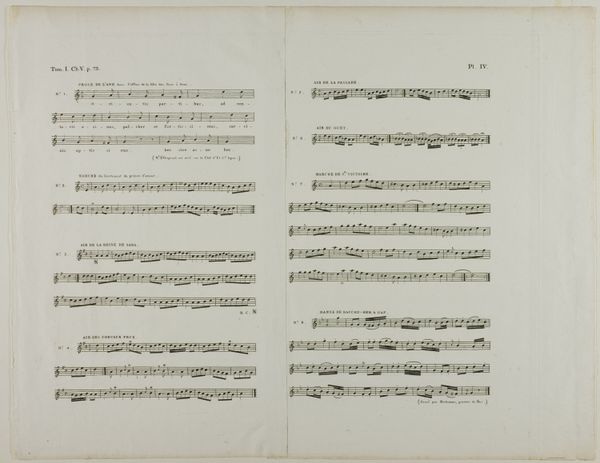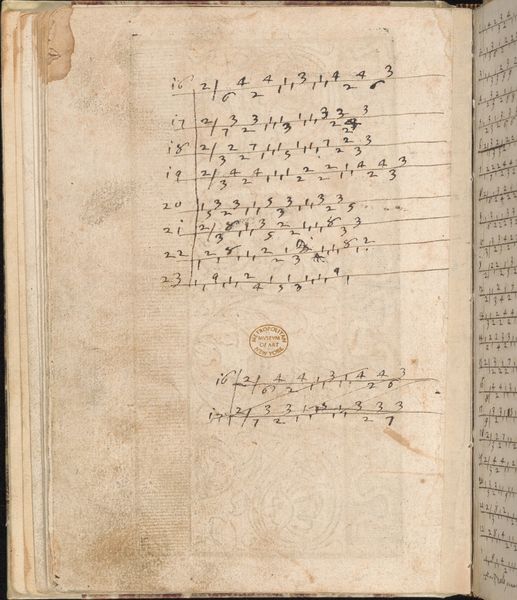
print, engraving
#
medieval
# print
#
engraving
Dimensions: height 147 mm, width 100 mm
Copyright: Rijks Museum: Open Domain
Editor: Here we have “Bladmuziek Tab. II,” created in 1743 by an anonymous artist. It’s an engraving, a type of print. My first impression is that this is about order, but a somewhat rigid order given all the straight lines. How can we interpret this piece beyond its face value, delving into its deeper significance? Curator: I see here a detailed account of material production directly related to social order and how both rely on a rigid structure of labour. The very act of engraving necessitates repetitive action and the transfer of information, dictating not just aesthetic but social structures related to craft and artisanship. Consider the paper itself; its composition, what rag content went into this seemingly mundane material. What would that production line have looked like? Editor: So you’re saying the method used to create this, the printmaking, dictates what’s represented, and furthermore, says something about its intended audience? Curator: Precisely! How was it made, by whom, and for whom are central to our understanding of it. These charts, seemingly of pure knowledge, were inevitably embedded in processes and the circulation of this specific material of printed knowledge itself. Do we consider the materiality of music production then as different from music composition itself? Editor: That's fascinating. It shifts the focus from the musical notes themselves to the context of their creation and distribution. This focus on material processes opens a completely different understanding. Thank you. Curator: My pleasure. This opens the question: does the physical process give this ‘musical’ object an aesthetic identity beyond a purely ephemeral musical rendition?
Comments
No comments
Be the first to comment and join the conversation on the ultimate creative platform.
